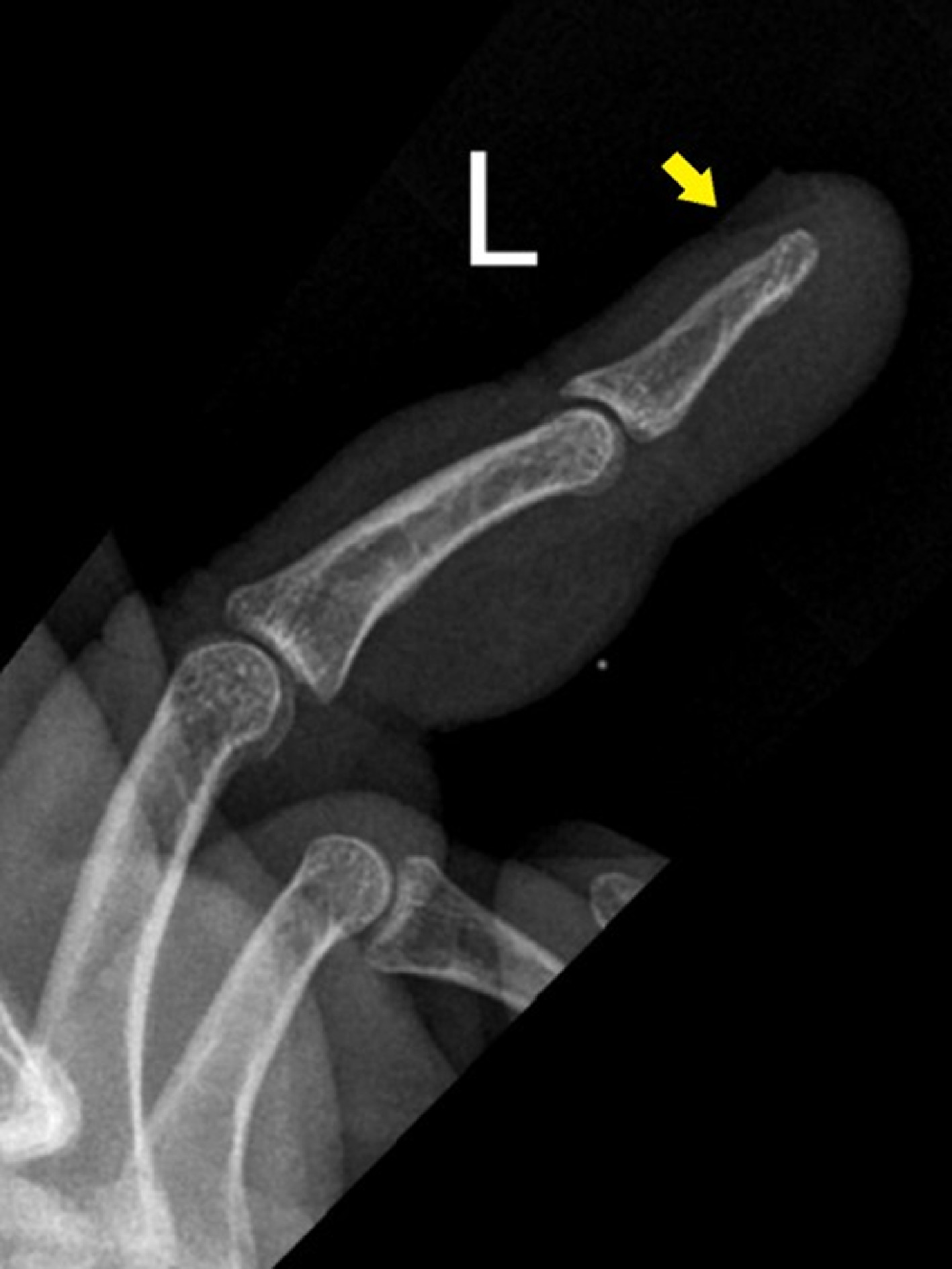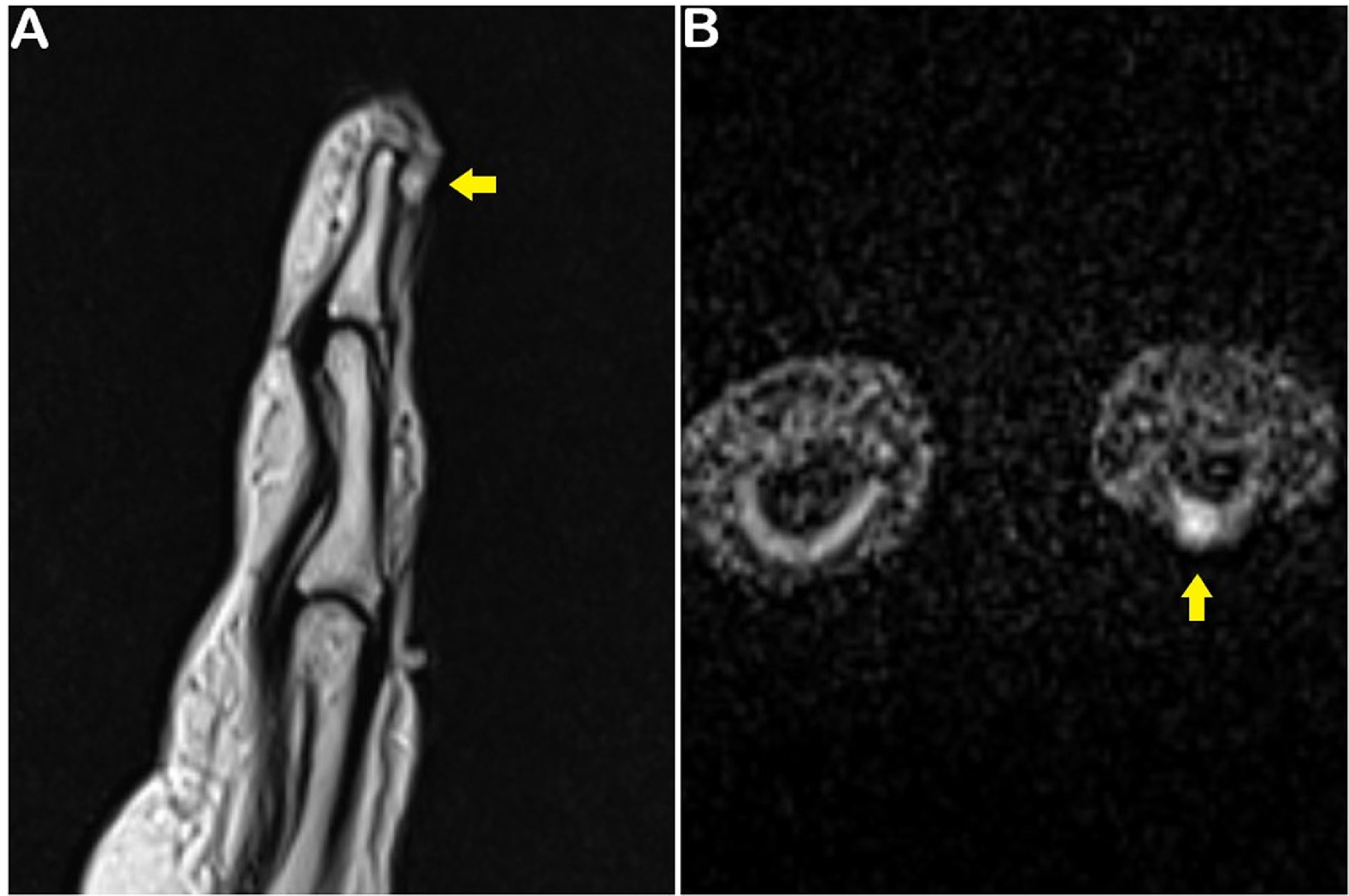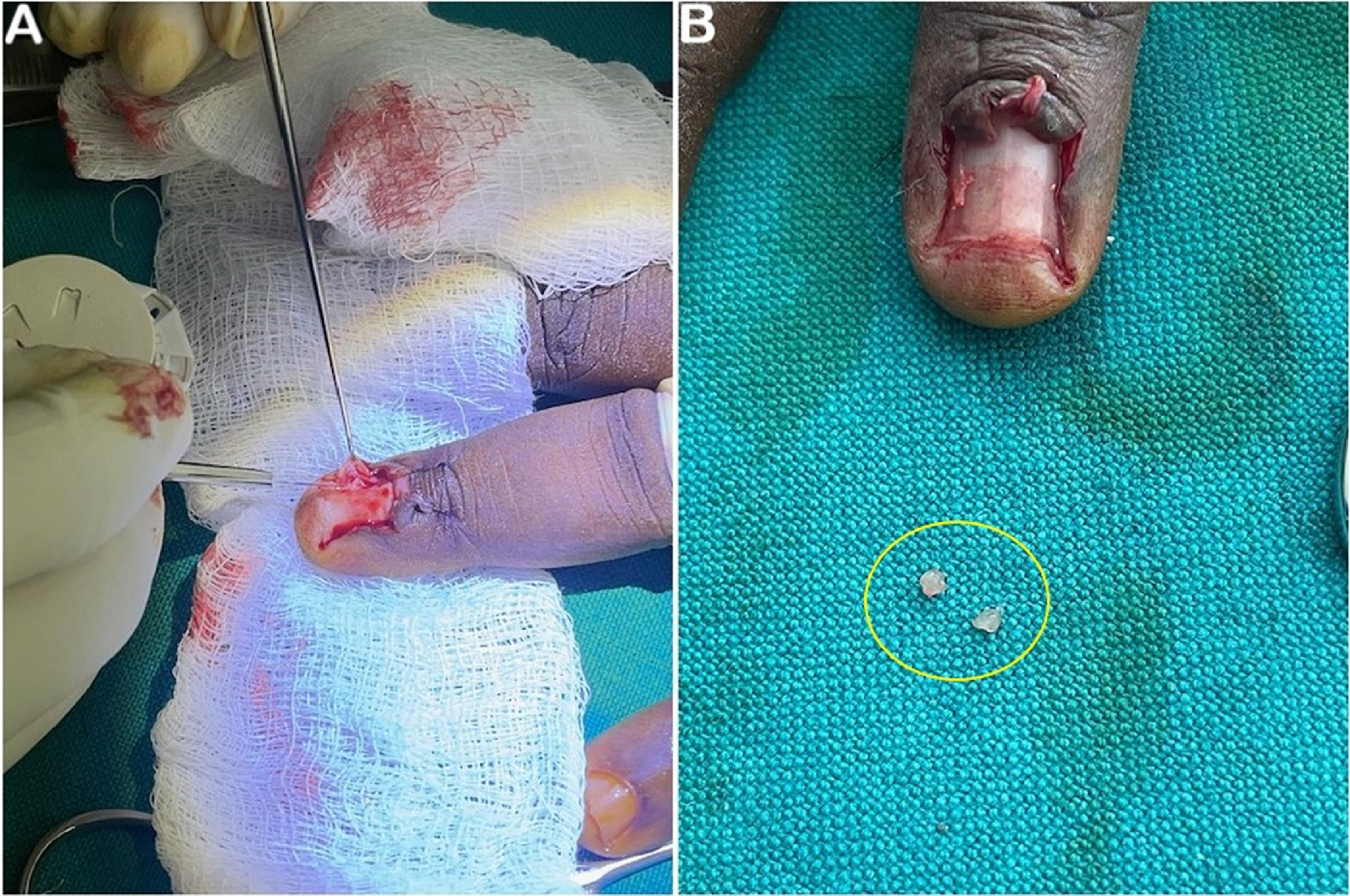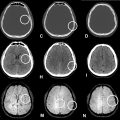Abstract
Glomus tumors are rare benign hamartomas, primarily small growths, found in the dermis or subcutaneous tissue, arising from modified glomus cells, which are distributed throughout the body, with a particularly high concentration in the subungual area of the fingers. This case reports a middle-aged man with persistent pain in the tip of his left ring finger for the past 5 years. With ideal imaging, the tumor was identified and surgically excised, and the patient is currently asymptomatic. Despite its presentation as a faint bluish-purple papule with the classic triad of cold hypersensitivity, paroxysmal pain, and point tenderness, it is often missed by clinicians and diagnosed late. With magnetic resonance imaging being the gold standard, the only resolution to pain relief is the complete excision of the tumor. Glomus tumors have been defined and estimated to be a few but significant part of hand tumors; however, in Africa, the prevalence is minimal and clinicians may be unaware of the presentation.
Introduction
Glomus tumor is a rare benign hamartoma arising from modified glomus cells, which are specialized smooth muscle cells functioning as chemoreceptors [ ]. The glomus body serves as a source of thermoregulation via arteriovenous shunts [ ]. Glomus bodies are distributed throughout the body, with a particularly high concentration in the subungual area of the fingers. Rarely found in other locations, such as the lungs, pancreas, stomach, genitourinary tract, and gastrointestinal tract, it is often misdiagnosed [ , ].
Glomus tumor was first described by Wood in 1812 [ ] and later by Hoyer in 1877, with a full clinical description given by Masson in 1924 [ ]. Glomus tumors are primarily small, benign growths found in the dermis or subcutaneous tissue of the extremities, with some cases presenting as solitary growths while others occur in multiple formations. While malignant occurrences are rare, they tend to involve large, deep-seated lesions exceeding 2 centimeters in size and often affect visceral organs. Additionally, giant intravenous glomus tumors have been reported [ ]. This case report highlights the presentation and diagnostics of a glomus tumor.
The work has been reported in line with the SCARE criteria [ ].
Case report
A 45-year-old male, of Maasai origin, presented at our outpatient clinic complaining of pain in the tip of his left ring finger persisting for the past 5 years, associated with on and off neck pain, with no history of preceding trauma and no skin discoloration. He localized the pain to a specific point near the distal phalanx tip and noted worsening discomfort upon exposure to the cold. Initially, he reported the pain to be mild but bearable, as it had not bothered his daily activities, and he did not seek any medical advice. He had noted that the pain kept worsening with time. He reported no similar complaints in his family. He had attended multiple health facilities including traditional healers, which were unable to assist his predicament. Lastly, misdiagnosed and treated for gout arthritis, he found no relief from the prescribed antipain management and considered elective disarticulation of his left finger’s distal interphalangeal joint for pain relief, ultimately opting to seek care at our center.
Upon examination, he appeared well with no signs of systemic illness, lymphadenopathy, or finger clubbing, but exhibited sharp tenderness centrally at the nail of the left ring finger with features of swelling and no signs of inflammation. Applying pressure to the left ring finger using a pinhead resulted in intense localized pain (Love’s pin test), and the pain was reduced by applying a tourniquet to induce transient ischemia (Hildreth’s test). Applying cold water to the left ring finger induced pain (Cold test). His initial laboratory investigations revealed a normal leukocyte count of 4.7 × 10 9 /L, a hemoglobin of 15.3 g/dL, and a platelet count of 280 × 10 9 /L. He had a normal creatinine of 98 µmol/L and an elevated uric acid of 492.6 µmol/L (normal: 202.3-416.5). His rheumatoid factor was negative. An x-ray imaging revealed depressions on the dorsal aspect of the distal phalanx ( Fig. 1 ). Magnetic resonance imaging of the left hand showed a well-defined isointense T1, hyperintense T2/STIR soft tissue mass in the nail bed measuring 0.3 cm × 0.3 cm × 0.5 cm in size. ( Fig. 2 ), confirming the diagnosis of a glomus tumor.


Under local anesthesia and with a finger tourniquet, complete marginal excision and bone curettage were performed using surgical loops to ensure thorough tumor removal ( Fig. 3 ), with no postoperative complications observed. The sample was sent to histopathology, which showed perivascular proliferation of homogenous round cells with round-to-ovoid nuclei arranged in multicellular layers around blood vessels ( Fig. 4 ). On 2 weeks of follow-up, he reported that the pain had disappeared. On subsequent follow-up visits, the surgical site had healed and there was no pain reported after tumor removal. Telephone follow-up after 1 year, he reported no complaint. From then on, he has experienced complete symptom resolution with no recurrence during a 2-year follow-up.











